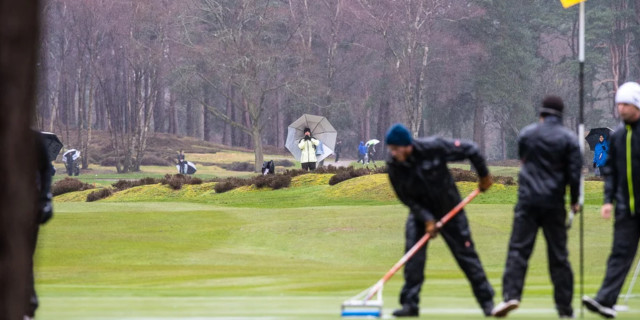The summer was glorious, but those long, sunny days on the golf course are now becoming a fading memory as the temperatures have gradually plummeted, the clouds have darkened, and the days have grown shorter.
Winter golf often comes with compromises, some more frustrating than others. You could argue convincingly that any opportunity to play should be embraced and seen as a positive – that’s undeniably true – but at the same time it can become a tough sell if the conditions are particularly inclement.
Many golfers simply pack their clubs away for a few months, but a considerable number of you don’t. However, that’s not to say that even these players love everything about getting out there at this time of the year.
We asked the Golfshake Community on Facebook to identify the worst things about playing golf in winter, and several factors were repeatedly mentioned.
Let’s take a look at the things that everyday golfers most dislike about winter golf.
The Weather
It goes without saying that if, like us, you’re based in the UK, then the weather can turn a bit rough during the winter. Whether it’s heavy downpours, strong breezes, or freezing temperatures and frosty conditions that can regularly shut the course, it can be a struggle to keep playing, even if you have all the waterproof gear and suitable footwear that you could hope for.
Restricted Hours of Daylight
There is so much to relish about the peak months of the season – including the long hours of daylight meaning that you can easily fit in a twilight round after work or play multiple rounds a day if you were so inclined. However, as dusk descends by the middle of the afternoon in late November and December, the opportunity that many of us have to play golf becomes restricted, which, if you’re the keenest of golfers, can be highly frustrating and mean that a floodlit range is your best bet
Underfoot Conditions

(Image Credit: Kevin Diss Photography)
Certainly related to the weather, but if you’re someone who plays a course that doesn’t drain well, those heavy deluges can leave unpleasant underfoot conditions, with muddy shoes and trousers guaranteed. Golf balls can easily become plugged on these occasions. You also have to think of those frosty days that see your course closed.
While not quite the same, if you play a tree-lined course, the thousands of fallen leaves across the fairways make losing an accurate tee shot a potential concern.
Cold Hands
Whether it be winter gloves or handwarmers, there are ways now for golfers to keep the feel in their hands on even the coldest days, but if you haven’t come prepared, then frozen fingers only make playing the game more difficult.
If you’re someone who has arthritis in your hands, then it’s especially important to ensure that you do what’s possible to retain warmth.
Winter Greens & Winter Tees
While some courses do remain fully open, it’s generally expected that you will encounter some degree of winter greens and tees during the low season.
These temporary additions can shorten holes and even rapidly change their character. Winter greens especially are uninspiring to face as a hole cut into a small bit of the fairway often doesn’t feel like proper golf.
Course maintenance is understandably something that many venues introduce during these quieter months of the year, but while the long-term benefits are obvious, it can diminish the experience of playing a round when many parts of the layout are roped off.
Fairway Mats
If you haven’t had to contend with winter tees and greens, you may be required to use mats on the fairways. These little pieces of astroturf help to protect the real grass for the peak season, but they don’t accurately replicate the same experience of hitting shots off a natural surface.
That said, if you’re like me and don’t hit too many fairways, then fairway mats are a welcome compromise if it means you can still play more or less a full course.
Playing golf in the winter does require some concessions to the conditions and the realities of things, but if you accept that and pick your moments wisely, it can be rewarding to keep playing 12 months of the year.
Kieran Clark is the Digital Editor of Golfshake. He oversees editorial content, community engagement, forums, and social media channels. A lifelong golfer from the Isle of Bute in Scotland who has now lived in St Andrews for a decade, he began playing at the age of five and maintains a passion for exploring courses, with a particular affection for historic layouts. Kieran regularly contributes in-depth opinion pieces and features, drawing on his enthusiasm for the game and its culture.






